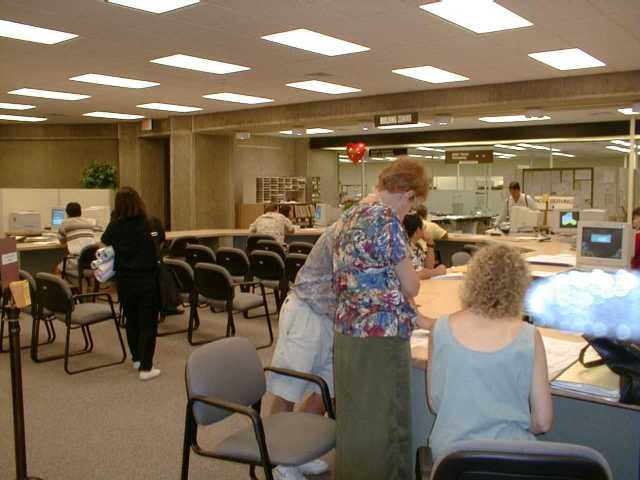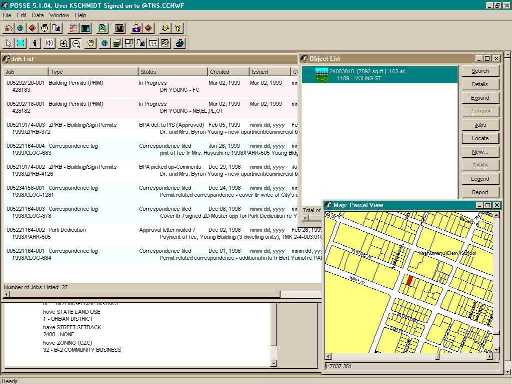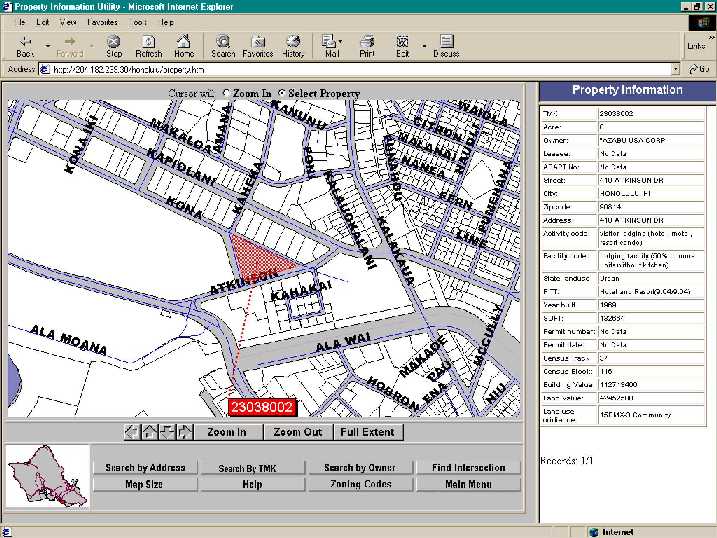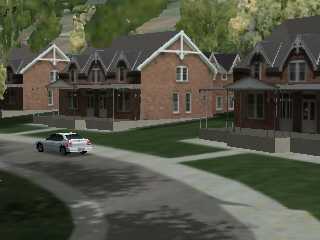
Ken Schmidt, Jim den Otter, Berna Cabacungan
The City and County of Honolulu are constantly challenged to improve service to the public. This requires embracing many initiatives for change. In 1997, a major City-wide reorganization placed all development permit activities (e.g., building, grading, subdivision, zoning, and sewer connections) into a single department. Operations—from permit application to site inspection—were realigned to create a new permit center. Reengineering of the processes, organization, and technology dramatically changed the underlying permit review and approval function. This paper presents the implementation models, decision making structures, information system requirements, deployment issues, and the cost benefits of overhauling such basic governmental services.
Innovating Development Design Reviews through Business Process Reengineering and Technology
The City and County of Honolulu instituted major changes to its organization to facilitate economic development opportunities in the construction industry. Reengineering of the permitting processes along with the implementation of new technologies created improved methods to assess, evaluate, and visualize development projects.
The City’s Department of Planning and Permitting led the way by adopting new practices, policies, and technologies to facilitate the evaluation of building permits. These programs ensured that new construction occur in harmony with the surrounding landscapes. By addressing every stage of the development process, the Department instituted programs to promote architectural designs that maintain a relationship to aesthetic qualities of the community. Examples of the programs include:
With technology as the catalyst, fresh ideas were presented for redefining the permitting process, and to emphasize reviews of a project’s impact on the landscape. The documentation of existing business processes and the establishment of reengineering teams provided the framework for changing the operational culture. Then, modifications to the operational procedures were instituted to promote a new perspective on performing permit review.
Continued focus on using the latest technologies to advance permitting operations is continuing to create incentives for economic growth. These changes are enabling architects, engineers, realtors, and other construction professionals to cost effectively develop an urban landscape in design with the natural qualities that are unique to Honolulu.
1.0 Early Pioneers
Recognizing that technology is dramatically changing the way government operates, the Department of Planning and Permitting (DPP) at the City and County of Honolulu embarked on many initiatives designed to incorporate advanced computing systems into its departmental operations. Adopting business type strategies to reengineer its customer services, DPP was an early organization to redesign its public services based on new and available technologies.
As directed by Mayor Jeremy Harris, a reorganization of City functions was completed in 1998 that eliminated departments and centralized City services. Initiatives were established to change historical operations with new business practices that promoted effective and efficient public service. The vision to create a single customer service counter was part of several major permitting policies that were designed to streamline land use, construction, and building permit approvals. Quick recognition of the potential for new technologies helped enable the centralization of the various permitting services.
With the reorganization, DPP was required to make major changes. Formerly known as the Department of Land Utilization, the Department grew from 75 to 300 employees. This expansion of responsibilities and services resulted in highly complex document routing and review procedures. To create meaningful, effective, and systematic change of its planning and permitting services, the Department had to undertake a project that used business process reengineering (BPR) concepts in concert with the acquisition of leading edge technologies.
2.0 Project Innovation
Project Innovation was created to facilitate the reengineering of DPP services. Basic to this definition is the concept of "big" change. The desire to make a big difference in how the public is served was the primary goal of the project.
The definition of Project Innovation is:
the fundamental rethinking and radical redesign of jobs and processes to bring about dramatic improvements in DPP's performance.
Based on this concept, DPP established the following objectives for Project Innovation:
It was the willingness of motivated, energetic, and talented people who understood the value of the project that drove many of the eventual changes. Teams were formed to identify potential improvements for operating procedures, and to implement technologies for accommodating proposed workflows.
To achieve success in this endeavor, the first order of business in Project Innovation was to understand the department. A clear definition of its "business" was necessary before designing innovations and recommending changes. The "core" team members adopted the following as the Departments’ business strategy, and its mission and goals.
Business Strategy: DPP is in the business of regulating land use and preparing long-range plans that guide the future of our island.
Mission: To provide development review and permit services embodying the highest levels of customer service. With a combination of professional planners, architects and engineers, highly trained support and technical staff, state-of-the-art technology and a re-engineered review and approval process, our department should be a model for government efficiency and effectiveness.
Goals:
Goal #1: Service
Develop a comprehensive service system that is sensitive and fully responsive to our customers' needs.
Goal #2: Management
Establish a change–ready department that embraces and rewards innovative thinking and the highest standards of professionalism from each employee.
Goal #3: Efficiency and Productivity
Reduce permit and project processing time and costs, eliminating all activities that are not of true value to the customer, or that do not fulfill our stated mission.
Goal #4: Technology
Maximize the use of technology to support the efficient use of staff resources in providing superior customer service, and establishing a departmental reputation for efficiency and productivity as a public agency.
Based on these principles, and with a focus on Customer-Public Services, individual teams set forth to identify unnecessary and duplicative processes to approve a permit application. Identification of potential improvements in operation were documented using the BPR models, and established milestones were identified for changing the basic building, construction, land use, and development permitting programs.
3.0 A New Frontier
The journey of reshaping DPP was long, arduous, and full of obstacles. Yet as it progressed, more and more milestones were achieved that revitalized an aging and unsophisticated permitting system. Independent, yet interrelated, operations were redesigned in phases and converted to newly acquired computing systems. Eventually all of the permit review and approval procedures were redesigned to provide the Department a new image.
3.1 Customer Services
Starting with the direct personal contact that DPP has with those doing business with the department, several physical, operational, and cultural changes were instituted to facilitate a working relationship with the public. Recognition that the ability to provide friendly, efficient, and knowledgeable services to the customers was the key for establishing services that would promote an economically sensitive development approval process.
Architects, engineers, planners, and other building professionals needed to have their development requests and permit applications reviewed and approved in timely manner. The challenge for all of these customers was to develop a construction project, in an economically beneficial manner, which adhered to the regulatory policies and guidelines that protect Honolulu’s urban landscape. DPP and its customer services personnel had to be conscious of the monetary impacts of the permit approval processes, while trying to ensure appropriate and professional practices were followed.
To instill the principles of customer services, a customer service charter was adopted. The DPP charter included the following commitments:
Physical changes to the customer services counter were also completed. The establishment of a "One-Stop Public Service Counter" was a major change to the face of DPP (Figure 1). The counter serves the customer better since representatives of the individual functions responsible for processing and reviewing building permits are in one location. The customer is able to receive assistance in one location during a single visit.

Figure 1: The One Stop Public Service Center.
A reference center where customers can look up Tax Maps, building permit regulations, codes, construction plans, and other land related records relevant to the permitting process was also centralized on the first floor of the Honolulu Municipal Building. Public research of historical land development records and regulatory reference materials is a major service provided to the public. Realtors, title, and insurance companies all use data available from the Department. The ability to quickly obtain accurate and comprehensive data of specific properties provides significant cost savings for many firms.
3.2 Permit Centralization
Integration of permit operations created greater opportunities for both the public sector and private industry to reduce the costs of business. Several BPR concepts were instituted that led to more effective customer services at the City permit counter. These included such examples as:
From these concepts changes were made to the internal operations of DPP. With change being a constant activity of the new economy, operations and procedures are continually under review for maintaining a service level demanded of government. To date there are several significant changes that have produced tangible and intangible benefits to the Honolulu economy. Some if these changes include:
4.0 Tools of Technology
Once an organization has committed to making major structural and operational changes, it must be sure that it has the right tools to construct a new foundation on which the organization must operate. Any interruptions of services can be costly to the developers, property owners, and the building professionals who earn their money by obtaining and completing construction permits.
Migration from early generations of computing systems to current high-powered machinery requires intensive effort. Mission critical operations must have technologies that are reliable, flexible, and compatible with other software programs, and be expected to have a long life cycle. Risks are greater yet they must be taken to avoid degradation of services, which will eventually negatively affect local construction and development industries.
There are many different technologies and software tools available on the market. Individual organizational requirements will dictate the types of computing systems that best fit each need. A key concept in the selection of products and equipment was to utilize mainstream technologies - yet emphasize newer systems that were adaptable to future technology influences. There were few products that fit this model.
The DPP computerization project was called Automated Permit Tracking and Management System (AutoPermits), but the project most commonly is referred to by the name of the software product. The product, developed by Computronix of Edmonton, Alberta Canada, is called POSSE, which standards for Public One Stop ServicE. The POSSE system (Figure 2.) was a catalyst for many of the operational changes that were made.
The POSSE system was born out of a prior business process reengineering effort in another local government. The designers were faced with a common conundrum for IT professionals working amidst a BPR effort:
We need a system to support our new processes and allow for continuous improvement, and we need it at the start of the BPR effort. However, we don't know exactly what our business is going to look like, nor what information we are going to collect or manage. Even once the processes are implemented, we are committed to continually evaluating and improving them.
In this environment, rather than build a traditional 'hard-coded' permitting system, the designers came up with a workflow and rules processing system, fully configurable by business users without programming, that can be adapted to virtually any work process. The system integrates data management, electronic document management, GIS, Internet, remote computing, and workflow. It also has the unique ability to access and use data in other external systems, simply by 'mapping' POSSE onto these external data sources.
As business processes are changed or replaced, no low-level programming is required in order to implement these processes in POSSE. Business users who understand the intent of the new processes simply define the rule and workflow changes or new processes into the POSSE Configuration application, test the results, and move these new processes into production. As all of the rules and workflows and data entry and display forms are actually described in meta-data, there is none of the traditional overhead associated with deploying configuration updates to the workstations. POSSE handles database changes, and automatically creates all of the required data entry forms on the fly.
The very activity of documenting processes for configuration into POSSE forces the business users to examine the processes closely. This actually assists in the BPR process. Furthermore, due to the flexibility of the system, processes can be piloted or 'tried', then improved, without the cost overhead of hard coding.
In terms of infrastructure and technical architecture, POSSE is an object-oriented system, deployed using an Oracle database, on a Compaq Proliant data server, under Windows NT. The POSSE client software is written in Sybase PowerBuilder, and integrates with Esri's MapObjects for map display and with SDE for spatial processing. Electronic documents of any type may be managed by the system - including OLE documents.
POSSE bases workflow on the concept of a "Job" being the central component of a system. A "Job" was defined for each unique permit type and its procedures. Each job included processing procedures, information details, and associated documents as defined by each of the individual reengineering teams.
Based on redesigned workflows, the POSSE software was configured by non-computing professionals to define workflows, related data objects, routing guidelines, and job status. Due to the versatility of the POSSE system to define workflows and alternative methods of communicating information, many new methods of operating were enabled. Some of these new procedures included the following:

Figure 2: The POSSE program.
An overall result of POSSE is the introduction of an integrated computing technology to the Department. The system interconnects each of the individuals and programs that perform the business of reviewing and approving City construction and development permits. By having everyone linked to a single system, with a consolidated database of permit-related data and information, DPP has many opportunities to change and improve its operations.
5.0 The New Landscape
Evolutionary change is often slow but dramatic. As with most radical changes, issues and obstacles had to be overcome. Employees had to become settled in the new surroundings and familiar with the new ways of doing their jobs. Acceptance of the new operations, procedures, and technology required that benefits be achieved for both the service providers and their customers. Yet, in the time since the permit counter began using the POSSE system, the operational environment of DPP has flourished, with new programs subsequently initiated that are now adding to the basic benefits derived from the initial deployment.
Recent enhancements to the procedural and cultural aspects of performing permit reviews are compounding the benefits of using new technologies. Many of these technologies add value to the planning and permitting programs of DPP by increasing the amount of data readily available to personnel to complete a job. Speeding up the completion of the permit review process and reducing the effort of the customers to obtain a permit significantly impact the costs of such services.
On-going advancements in services continue, with several new technologies now being introduced into DPP operations. Since the original system was deployed, integration of other Information Technologies has occurred, with several more programs scheduled to come on-line in the next few months. Some of the technology programs added include:

Figure 3: GIS on the Internet

Figure 4: Virtual Reality Models of Construction Projects
6.0 The Sustainable Community
Built to react to the hot issues of the day, the new DPP is now able to perform a much more proactive role in defining a development project for Honolulu. Information content available from the POSSE system, along with other technologies being introduced to the Department, is enabling greater long-range development planning and more careful study of the aesthetic design of major projects. Projects are being managed from their inception to their completion, with much emphasis on the cost associated to completing the project and with an increased focus on the community impacts of such developments.
Sustainable community plans are expected to define the nature of future development throughout Honolulu. Individual plans are being defined for each of the 8 major geographic regions on Oahu, along with specific plans for individual neighborhoods. Each plan is being developed in concert community leaders and in public forums. Each plan is intended to be a "living document" that defines a vision of life in the future for the residents of the community.
Vision teams and citizens participate in creating these documents. A summary of vision statements is intended to identify aspects and issues that are important to all residents. Vision categories and examples of statements include:
7.0 Summary
A holistic view of the planning and permitting life cycle is creating an organizational system that defines policies and regulations that encourage development that is sensitive to the values and economic issues in communities. The utilization of technology along with concepts that encourage operational efficiencies has created a work environment that is responsive to the ever-changing landscape in which DPP must manage. Rapid changes in economic and social factors that effect the aesthetic quality of a neighborhood requires that governments have the tools and programs to react to mitigate negative influences while promoting healthy living environments that everyone can enjoy.
References
Brown, John Seely and Duguid Paul 2000, The Social Life of Information, Harvard Business School Press
Cabcungan, Berna 1999, Project Innovation: Changing the Way the Department of Planning and Permitting Does Business, City and County of Honolulu Department of Planning and Permitting
City and County of Honolulu, Department of Planning and Permitting 1999, Central Oahu Sustainable Communities Plan, City and County of Honolulu Department of Planning and Permitting
Hammer, Michael and Champy, James 1993, Reengineering the Corporation, HarperBusiness
Ken Schmidt, GIS Coordinator, City and County of Honolulu, kschmidt@co.honolulu.hi.us
Jim den Otter, CIO, Computronix, jim@computronix.com, www.computronix.com
Berna Cabacungan, EarthPlan Inc., eplan1@aol.com